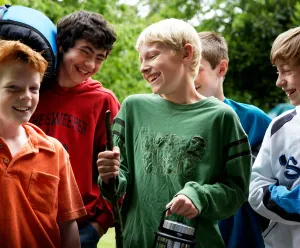Written by Dr Marcelle Moore, Child and Family Clinical Psychologist (reposted from LinkedIn)
Like many people across the world I am trying to process the devastating events of Saturday 13th of April in Bondi Junction, Sydney, Australia. My clinical practice where I work with children and families is opposite Westfield shopping centre in Sydney.
I am mindful that prior to 3.20pm on Saturday the 13th of April that everyone in the shopping centre was just getting on with their day as they had perhaps done every other Saturday. An unprecedented and unpredictable act of violence then occurred that has impacted the lives of so many people.
I am aware that there are likely to be a high number of children who have experienced terror and extreme fear during this event. Many children are likely to be in a hyper-aroused state, after witnessing these events that were terrifying and life threatening. They are likely to have also seen their parents and other adults understandably panicked, as their protective systems were activated in a situation that was dangerous and unexpected.
The human body and human mind have a set of very important and very predictable responses to threat. One common response to danger or threat is the ‘fight or flight’ reaction. In the initial stages of this reaction there is a response called the alarm reaction, where our brain sends a message to our body to get ready to either fight for our life or run from the perceived danger.
On occasions when fighting or fleeing is not possible, children will use avoidant behaviours that are dissociative. Dissociation is basically when an individual disconnects their attention from the outside world and focuses on their inner world. Dissociation can involve a distorted sense of time, it can be experienced as a detached feeling where you are seeing something play out that is unreal almost like watching a movie of your life. Children can appear as though they have checked out in the moment and are in a daydream state. The intensity and frequency of this can vary.
Noticing these behaviours is important as we need to check they do not severely impact aspects of everyday function. For children this can be intermittently cutting off from their external world where they can’t engage in play or learning. When the threat is removed and safety is re-established through repetitive predictable experiences the intensity of the dissociation should reduce over time.
Witnessing traumatic experiences can have a devastating impact on children, changing aspects of their physical, emotional, cognitive and social development. Children, like adults, need time to process situations that have caused extreme fear. They might not be ready to talk about what they have seen straight away and as suggested above might even disconnect from the experience, which is their brains way of protecting them when something has been so traumatic and is still emotionally over-whelming.
Children can be emotionally overwhelmed and seek to keep themselves busy, almost appearing cut off and distant from experiences they have had. It is crucial that your children know you are emotionally present for them and that you can sit in the big feelings that they are experiencing. Children need time and space to express these feelings so they can be helped to move through fear.
When children have witnessed frightening events there can be triggers that they see, hear or smell that can cause them to re-experience the intensity of feelings they experienced during the initial event. As a parent you may notice a difference in behaviours as children begin to process through what they have witnessed. Children, like adults, will begin to process and think about what happened to them. They will attempt to make sense of events they have witnessed that occurred in a place they once felt safe in. The experience may play itself over and over in the mind of the child again and again. This is likely to include a number of intrusive images related to the trauma that may flood a child’s thinking. The experience of re-thinking or seeing a traumatic event may include children telling the story over and over again to friends in an attempt to try and process the trauma.
Aspects of functioning that could be altered is children’s sleep, which might include struggles to settle, restlessness or experiencing nightmares. Children may also have frightened feelings about being alone. Other behaviours may appear regressed such as becoming more dependent on adults doing things which they could previously do independently.
If your child expresses or shows fear, allow them to be sad or to cry, stay present with them without trying to make it better in that moment. In time, with the safety of connection, children may begin talking to others or playing out their feelings in their imaginative play or by drawing. Their re-telling of events will not be easy for adults to hear, but it is important that children are allowed the space to talk when they are ready so their thoughts and feelings are shared and not internalised.
It is important to limit children's exposure to repetitive news reports about the traumatic event and limit their exposure to social media as the videos being shared are graphic and likely to re-traumatise. Let them sleep in your room (for a short time) or sleep with a night light on if they are struggling to sleep. In time, by creating a familiar calm rhythm with respect to sleep, that night-time safety is re-established. Other things that can help to re-establish a sense of safety is by continuing with ordinary routines around family and friends such as walking the dog, doing everyday things like eating me
It is important to notice your own emotional disregulation as an adult as children are so attuned to our emotional states and are highly reactive and responsive when they sense we are not okay. You might also begin to notice changes in their behaviour that are out of character such as an increase in aggressive play or aggression towards others. You might also notice them withdrawing and being less willing to do things. These are all responses that are often seen when children experience life threatening traumatic events.
It is important to remember that witnessing a life-threatening event will have a significant impact on children and adults. The re-establishment of safety through connection will be healing and in time many of the regressive emotional and behavioural responses will reduce.
If, however you feel you would like some help to support you and your child after the traumatic events in Bondi Junction you can reach out to Clinical Psychology services who specialise in working with children and families.
Once again, I would like to express my deepest condolences to all of the families, retail workers and first responders who were affected by the devastating events of Saturday the 13th of April in Westfield Bondi Junction.









